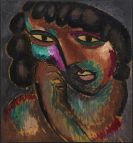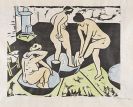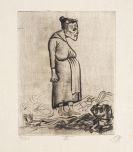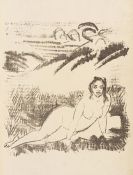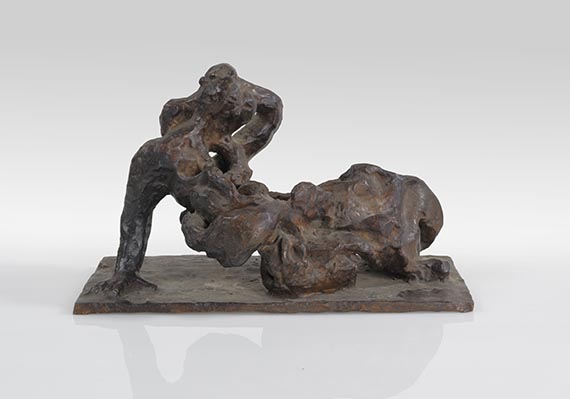
Ludwig Mies van der Rohe
Aachen
1886 -
Chicago
1969
Ludwig Mies was born in Aachen in 1886. He added on his mother's maiden name, calling himself Ludwig Mies van der Rohe from 1913. Between 1887 and 1900 Ludwig Mies van der Rohe trained as a stonemason under his father at the Aachen Dombauschule. In 1903-04 Mies van der Rohe was empoyed as a draftsman in an Aachen architecture practice. In 1905 Ludwig Mies van der Rohe went to Berlin, where he worked for Bruno Paul until 1907. Between 1908 and 1911 Ludwig Mies van der Rohe was employed in Peter Behrens' architecture practice at the same time as Walter Gropius, Hannes Meyer, and Le Corbusier were working there.
During this phase of his career Ludwig Mies van der Rohe collaborated on designing the German embassy in St. Petersburg (1911) and designed a country house for the Kröller-Müllers in The Hague. In 1912 Ludwig Mies van der Rohe opened an architecture practice of his own in Berlin.
Mies van der Rohe's designs for high-rise buildings with glass façades attracted a great deal of attention in the 1920s. In 1922 Ludwig Mies van der Rohe joined the "November group".
In 1926-27 Mies van der Rohe was entrusted with organizing the "Werkbund" exhibition, "Die Wohnung" in Stuttgart, which gave rise to the Weißenhof Settlement. One housing unit of that settlement was designed by Ludwig Mies van der Rohe.
For the 1929 World Exposition in Barcelona, Ludwig Mies van der Rohe designed the German Pavilion and the "Barcelona" chair as well as a stool and table with an X-shaped frame for it.
In 1930 Mies von der Rohe built Villa Tugendhat in Brünn (Brno, Czech Republic). That same year, 1930, Ludwig Mies van der Rohe succeeded Hannes Meyer as head of the Bauhaus in Dessau. He was able to prevent it being shut down by the NSDAP by moving it to Berlin in 1932 but in 1933 the Bauhaus was forced to close permanently.
In 1938 Ludwig Mies van der Rohe emigrated to the US. He opened an architecture practice in Chicago and at the same time became head of the architecture department at the Illinois Institute of Technology. The years that followed saw a great many masterpieces of the International Modern style built after plans by Ludwig Mies van der Rohe, including the Fox River House (1945-50), Farnsworth House (1946-51) at Plano, Illinois, the Lake Shore Drive apartments in Chicago (1948-51), and the Lafayette Towers in Detroit (1955-63). In 1958 the Seagram Building was finished in New York.
In 1962 Ludwig Mies van der Rohe designed the "Neue Nationalgalerie" in Berlin. As a furniture designer, Ludwig Mies van der Rohe created a great many pieces that are design icons. One of his early chair models resulted from collaboration with the designer Lilly Reich.
Ludwig Mies van der Rohe was a leading exponent of the International Modern style and a titan of 20th-century architecture and design.
Would you like to sell a work by Ludwig Mies van der Rohe?
Infos for seller
